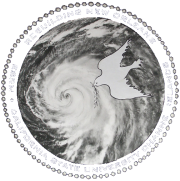Remembering NOLA: Spring 2015 CSUCI Service Learning
Our time in Louisiana was insufficient and the need to continue our Service Learning is still lingering in my mind as I picture elderberry recruits. The smell of gas in the air, and the feeling of NOLA’s humidity is now reminisced by us all. The sound of trumpets and street performers still buzzes in my head. Those pesky mosquitos ate us alive in the swamp. The tasty Po’Boy that brought a smile to everyone’s face after a long day in the field. These were all great NOLA experiences and will be a part of the story of my life that I hope to pass to my children and grandchildren. But most of all, the smiles and good vibes of those who showed great appreciation for our help will never be forgotten.
Upon arrival I was nervous and scanned the land just as a raptor looks for its prey. I kept calm, and as the days went by I soon began to feel like I was a part of NOLA. The first few days we set out to learn about the history of NOLA and got to learn why Hurricane Katrina was such a disaster through local individuals who shared their stories and knowledge of this unparalleled event. We did all this in order to help us understand why we are here. And in so doing our explorations seemed to have sparked a light that pushed us to work as hard and as best we could.
Every time we hit the 100m mark (the terminus) of a transect, I paused and looked around. The feeling of being so small out in the wilderness made me feel alive, awakening my senses. Human civilization was all around us, yet being inside that fractured but enclosing forest made the nearby humanity feel nonexistent. We worked hard at cutting our way through those transect sites and always had some kind of painful encounter with three meter high blackberry bushes as of honor. Woodlands Trail and the Delacroix Preserve were two of our work sites. While the comparative high ground of Woodlands Trail had some areas that were flooded, Delacroix afforded us no mercy and was completely flooded. In spite of all that water, Delacroix offered more of a view of what I think the swamps of NOLA looked like in the past. Both sites were beautiful in their own way and by studying them we can help them survive the test of time for our well being and the well being of our planet.
Irvin Mayfield gave a wonderful performance. Tevin, a Service Learning classmate of mine, still brings a smile to my face as I recall him showing up the ladies on the dance floor at the Royal Sonestra. Paul Sanchez left us with the clear feeling our hard work was appreciated and his stories had everyone going all night. Overall, words cannot describe how thankful I am for have been given this opportunity. I’ve spent most of my college life working to pay the bills, attending school without any sort of internship experience. This program made it possible for me to experience a taste of just that. I know I will continue to engage in such efforts for many years to come.
Remember,
“In Wildness is the preservation of the world”
-Henry David Thoreau
Thank you to everyone who made this possible for us and thank you Dr. Sean Anderson for making this adventure remind us of why we are fighting an uphill battle and keeping the hope alive.
Jonathan Fausto, CSUCI Senior ESRM student.
-Cornbread!












